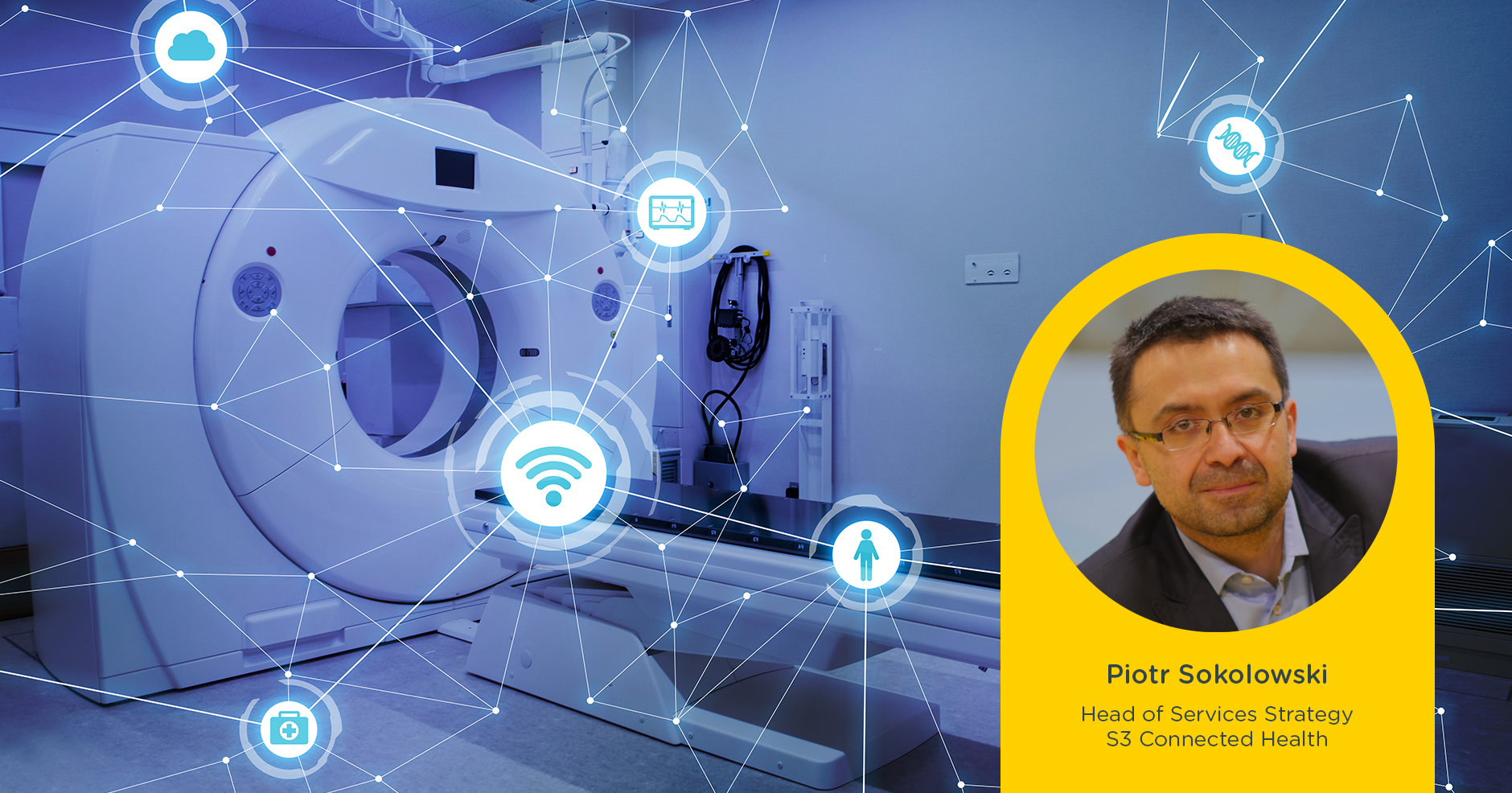Therapy improvement services are an essential first step towards driving efficiency in healthcare. They optimize existing clinical therapies and protocols, and capitalize on new digital health methods – such as connected devices – to increase efficiency, reduce costs, and ultimately improve outcomes and quality of life for patients.
There is, however, significantly more value to be unlocked using ‘connected health’ paradigm when we start to consider:
- The end-to-end patient journey, rather than focusing on specific therapies
- The entire population, rather than a single patient
- Patients as active stakeholders of healthcare, rather than cases to be managed
Deep analysis of virtually any healthcare domain reveals inefficiencies related to a lack of interconnectedness along the patient journey. Too many clinical and administrative processes are still manual, labor-intensive, and prone to human error. Data sets and services are still not integrated. This makes it difficult to make the right and timely clinical decisions and makes it hard to deliver optimal care at optimal cost.
The industry must invest in connected health solutions and join up the data.
Why connected health services are so important
Connected health services address the above inefficiencies by taking a broader look at the whole challenge rather than at a particular therapy in isolation. This builds on top of specific therapy improvement services with a goal to improve outcomes on the higher level. So, by taking a more holistic approach, we can begin to provide and optimize healthcare services rather than specific devices or medications.
This complete view of service delivery makes it easier to manage wider sections of the patient journey and drive down the total cost of care without compromising quality. It also makes it easier to adopt new approaches and offer new disruptive clinical protocols, rather than simply optimizing existing ones. And, rather than proposing new standalone tools, we can devise ways to more tightly integrate with existing information systems like Electronic Health Records (EHR), hospital information systems and payors’ systems.
Driving value from connected health services
Connected health services fit directly into a value-based care model and make it easy to draw up contracts between payors and healthcare providers. Creating a more unified approach to healthcare delivery, therefore, not only improves patient care and outcomes, but also reduces costs and administration challenges and accelerates overall delivery.
A more connected approach helps provide platforms for multiple stakeholders of healthcare systems to come together, analyze data, and drive insights. For example:
- Payors get an aggregated longitudinal view on patient and cost stratification
- Distributors can optimize supply chains and device maintenance
- Medical device vendors can better understand their customers and end-users and respond to unmet needs
Considerations for medtech companies
As with any investment, medtech companies must consider the benefits as well as the challenges to be expected when entering into a new field.
The most important reasons to invest in connected health services are:
- Gaining a meaningful position at the table where the future of healthcare delivery is discussed with providers, payors, and policy-makers
- Establishing much closer connections with patients and device users
- Establishing new business models and revenue streams with a higher growth potential than pure device-oriented offerings
However, the challenges facing medtech companies taking steps in this direction are:
- Shifting mentality from a device manufacturer to a service provider
- Engaging new types of stakeholders and operating in multi-stakeholder environments (patients, distributors, providers, payors)
- Embracing technology that is the foundation of connected health (connectivity, data and service integration, consumer-like user experience etc.)
The future of healthcare is moving rapidly towards a more connected and integrated system. But to pivot from the role of a manufacturer to a service provider is not easy, and will require an overhaul of the way you conduct business. To help with this transformation, enlist the support of a trusted partner.
Why you should collaborate with a partner
To respond to the complexity that connected service provision brings in terms of new skill sets, interoperability, and integration with larger care systems, collaborate with an expert in the field.
Partners offer skills outside your core competencies that supplement your own and therefore can help you accelerate your time to market. By leveraging their expertise, you can avoid some of the typical pitfalls that can hamper your progress along the way.
Taking a more holistic approach to the challenges in healthcare, medtech companies can shift from point therapies and fee-for-service models, and move higher up the value chain. Integrated healthcare services are the way to dramatically improve patient health, the provision of care and ultimately secure your long-term competitive position in the market.
Piotr Sokołowski
Head of Services Strategy, Connected Health Solutions
S3 Connected Health
To find out more about how connectivity can drive operational efficiencies for your company, download our new whitepaper:
Unlocking Medtech’s Future Potential with Connected Devices and Services


